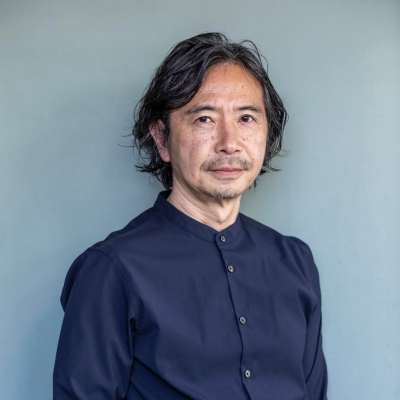
COLUMN
Search by keyword
- All
- Ryotei & Restaurants
- Lodging/Hotels
- Producers
- Technology
- DX (Digital) & SNS
- City Planning
- Utilization
- Gastronomy and Culinary
- Japanese Nature
- Japanese history and traditional culture
- Japanese Food Culture
- Agriculture
- Fisheries
- SDGs
- Local production for local consumption
- Foreigner Activation
- Experience
- Overseas Expansion
- Fermentation
- Public-private partnerships and collaborations
- Sake
- Community Revitalization
- Spirituality
- Japan of the Sea
- Mountain Japan
VIEW ALL
-
Read more

15 A “Delicious” Economy to Change the Future of Society—Living in a Country with the Best Food in the World
Japan can perhaps be called the country with the best food in the world. In a global survey asking which countries people most want to visit after the pandemic, Japan was number one among people living in Asia and number two among those in Europe and the US. In both cases, Japan was at the top end of the list. Moreover, the number one reason people wish to visit Japan is said to be for its food. As this suggests, while many foreign visitors to Japan come in search of delicious food, Japan in fact has the highest number of Michelin-starred restaurants in the world. The total number of stars and three-star restaurants in Tokyo far exceeds that of Paris, which can be called the home of Michelin star framework. A characteristic of the restaurant industry in Japan is that many Japanese chefs have honed their skills not only in Japanese cuisine, but also in French, Italian, and other foreign cuisines, and have earned Michelin stars. Further, outside of Michelin stars, there are countless numbers of Japanese chefs who have won first place in international cooking competitions such as the Pasta World Championships and the World Pizza Championships. We can therefore say that Japan is the country that evolves tastes of other countries in more delicious way. Elsewhere, Japan has an abundance of delicious, seasonal foods from both the sea and the mountains. Thanks to an excellent supply chain, customers can consume these ingredients while they are still fresh. Meanwhile, advanced fermentation techniques developed in the preserved food culture have broadened the range of umami flavors. There are many positive aspects of Japanese food, such as the diversity of food culture, which varies from region to region, including traditional and local cuisine, and the high level of “seasoning technology” in factories producing seasonings and processed foods. Alongside its “deliciousness” technology, Japanese food is also highly regarded worldwide for its health benefits and for its lower environmental impact compared to Western food. In 2005, the number of Japanese restaurants overseas stood at approximately 25,000. In 2010 this number doubled to 50,000, and expanded to 150,000 in 2020. With such wonderful characteristics, it is essential that we seriously address how to maintain and develop our globally respected food culture. Doing so can help Japanese food culture maintain its dominance over the centuries. In a future of exploding world population, food will become […]
-
Read more

11 The Direction of Japan as a Tourism Hotspot—Terroir and SBNR through VISON
The French word terroir, frequently used in the wine industry, comes from another French word, terre, meaning “land.” Terroir refers to a combination of natural factors that give products their unique, locally rooted characteristics, including geography, terrain, and climate. At BuzzFeed, which is one of the largest digital media outlets in the US and Japan, we feature various articles from a diverse range of fields. During the pandemic, however, when there were restrictions on returning home and other forms of travel, there was a particular rise in interest in news about locally rooted food. In FY2021, we released 34 articles tagged #deliciouslocalfood, which were shared more than 25,000 times on social media, accumulating more than 1.25 million views. In this article, I would like to consider how to apply current reader interest to post-COVID-19 tourism. VISON, one of Japan’s largest commercial resorts, opened in July 2021 in Mie Prefecture based on the concept “Alongside Our Region.” Mainly through markets offering fresh fish from the nearby Kumano-nada sea and fresh local vegetables, as well as restaurants and hotels, VISON aims to provide experiences based on “healing, food, and knowledge,” combining tradition and innovation to revitalize and create new regional economies. At the same time, VISON also plays a key role in solving regional issues that are common throughout rural areas in Japan, including population decline, ageing communities, and worker shortages in agriculture and forestry. The core concept of this resort is terroir, or in other words, local production for local consumption. By providing this terroir and attracting people from outside the region—who typically spend more than local customers—, the region can acquire foreign currency. In turn, this can help maintain high wages and ensure high-quality local employment. Using cuisine to communicate the appeals of the region’s ingredients, culture and worldviews to visitors from outside the region can ultimately help to solve the issues that the region faces. To solve local issues through the new employment of 1,000 people, VISON is aiming to attract around eight million visitors a year, which is around the same number as one of Mie’s most popular tourist destination, Ise Jingu Shrine. Meanwhile, interest in “spiritual but not religious (SBNR)” activities, such as mindfulness, meditation, and yoga, is growing on a global scale. According to the Pew Research Center in the US, approximately a quarter (27%) of American adults consider themselves to be SBNR. The prolonged pandemic […]
-
Read more

3 Japan’s Coexistence with Nature and Expectations for the Future of Food Culture in Society
The Ise Jingu Shrine hosts approximately 1,500 festivals and rituals each year, but perhaps the most important one is the Kannamesai festival, which is a symbol of Japan’s rice culture. Among these annual festivals, the Shikinen Sengu ritual is said to be the shrine’s most solemn ceremony, that the shrine’s deity (the sun goddess Amaterasu) is transferred to a new shrine building every twenty years. This In the Man’yoshu book of poems and other classical texts, the Ise Jingu Shrine is so called as Kamukaze no Ise, or Ise of divine winds. “Divine winds” brings to mind a gentle climate, natural features, and sufficient amount of rain for abundant harvests. I believe it is the ideal representation of Ise. Moreover, according to the Nihon Shoki, or Chronicles of Japan, during the reign of Emperor Suinin, Amaterasu said to Yamatohime-no-mikoto, “This Ise of divine winds is a province where the waves of heaven continuously reach the shore.” Amaterasu is a symbol of the sun, and her words imply the sun, the wind and the waves nurtured the nature of Ise, and show how the sacred city exists as one with nature. Food, clothing, and shelter are essential for humans These three elements are also an essential part of the Shikinen Sengu, which was first conducted around 1,300 years ago. Here I would like to focus on the food that have been offered forshrine deities throughout the shrine’s long history. Today, global environmental consideration are growing and the increase in greenhouse gas emissions and the disposal of leftover food are frequently broadcasted on news. I believe that the food culture at Ise Jingu Shrine could contribute to the future of global society. According to a record from 804 (Enryaku 23) of the ceremonies held at the Kotai Jingu Shrine, which is the inner shrine at Ise, at the Tsukinamisai festival held on June 15, local peasants from Shima province offered abalone and turban shells to the deities. Meanwhile, in chapter 4 of the Engishiki (Procedures of the Engi Era; completed 927 (Engi 5)) , which is about ceremonies at the Ise Jingu Shrine, offerings at three important shrine festivals were said to be dried foods, sea slugs, skipjack tuna, seaweed, salt, and oil. In the medieval text Jinposho—a list of districts within the Ise Jingu Shrine —we can see that, including from 14 districts in Ise province, the inner and outer shrines […]

